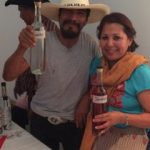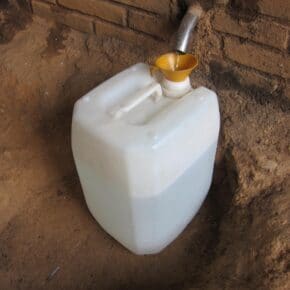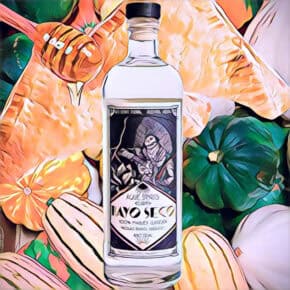It was a whirlwind of a Oaxaca trip – not so much in time but in all that was done in two very short and long weeks.
The pretext for the trip was a wedding – my first Spanish teacher in Oaxaca marrying her Danish love, and former classmate of mine. Despite already being married for four years (in Denmark) the shindig in Oaxaca was huge, fun and no less of a celebration. Honestly, if it hadn’t been for Marisol and her introductions to her friends all those years ago, I am not sure my path in Oaxaca would have led me where it did (to mezcal).
From those crazy and late-nights beginning to the trip, everything just steam rolled through till the last day. My last trip to Oaxaca, in December of 2014 after a two year absence, was more family vacation, so sneaking in nights to the newest restaurant, mezcaleria, bar, etc was challenging. This trip I was flying solo and made the most out of it – from trekking out to pueblos, to hitting the new spots, to eating whatever and whenever I could. And of course to do this in the middle of the gorgeous and insane Guelaguetza, well, the sleep when I’m dead mantra seemed close to becoming a reality.
So overview thoughts before I start diving into these over the next couple of weeks.
- There has always been that fine line of parallel city existence between Oaxaca and San Francisco -two joined souls. And never did this seem more clear with the unbelievable gentrification that has happened in Oaxaca over the past three years. The money poured into welcoming tourists is quite obvious (wow that new airport, the newly paved roads – though still laden with topes, the new andador on Garcia Virgil…) The new mezcalerias – I think there are now 8 or 9 now? The prevalence of high end restaurants, cafes and their specialty roasted coffee, a cerviceria – your basic food hipster paradise. It is quite overwhelming and with an incredible exchange rate (15.5 pesos to the dollar) well, heavenly, for me, not so great for the average Oaxacans who have been dealing with increasing wage inequality and inflation. Which leads to…
- Mezcal is expensive in Oaxaca. The new rules and regulations of both CRM (Comercam) and the government body that oversees business registration have created an interesting market in the city where pretty much everything now sold in bars, restaurants, stores has to be branded. The newly regulated industry has opened some pretty big doors for the middlemen who seem to be the ones getting rich. Now getting a decent copita means paying 30 pesos at the least all the way up to 200 pesos for rare stuff. Again, this is not so much a problem if you are either wealthy or a foreigner, but as an average Oaxacan well suddenly your mezcal is pretty damn expensive, unless you have a connection.
- The looming (or not) agave crisis and sustainability issue of the industry. The price of agave has come down, more agave is being grown, but still, it is a fragile balance and the slightest thing could throw the whole thing out of whack (another agave shortage/pricing issue in Jalisco where they have been known to use the Oaxacan agave sugars for fermentation; blight; economic shifts of pay, inflation, etc.) And of course the fact that there is no overseeing body regulating the cultivation, re-planting of wild agave, etc despite everyone talking about this for years, and well, you have a kind of mishmash or desmadre of a situation brewing.
- The growing influence of the European market on mezcal. It’s an easier market to enter for the most part, it’s educated when it comes to complex spirits, and of course, so much easier for travel as Oaxacans don’t need to jump through the demanding US Visa hoops.
- The growing visibility of women in the industry. Always a part of it, but now coming out of the shadows a bit as people/brands/cooperatives recognize the great marketing opportunities and stories to be told. Also there is the increasing independence you see as women become more educated and are waiting to have children, or have more control over when they have children.
- And perhaps finally, the increasing lack of transparency you see in the industry – ironically at the same time of increasing CRM regulations. These regulations have allowed for a greater disconnect between the mezcalero and the end consumer, creating even more of a market where the drinker, and sometimes even the head of the brand, really has no idea where the mezcal comes from.
It was an amazing trip, as always, and no matter how many times I have been there, no matter how much time I have spent, each trip reveals something completely new – can we say mole amarillo with conejo?


















Leave a Comment